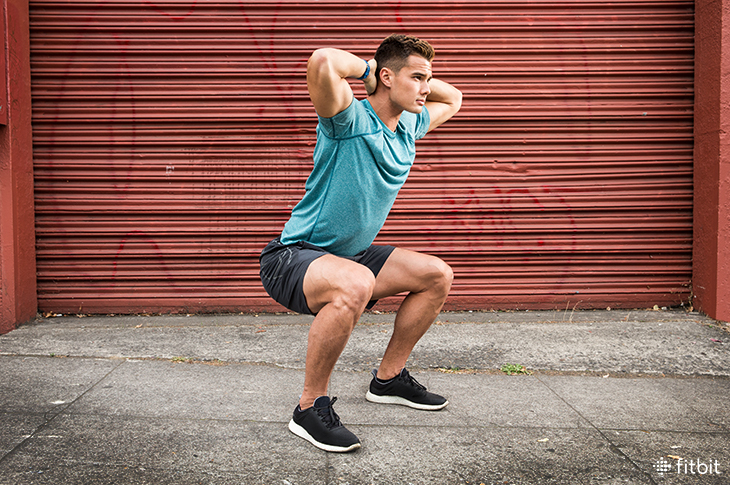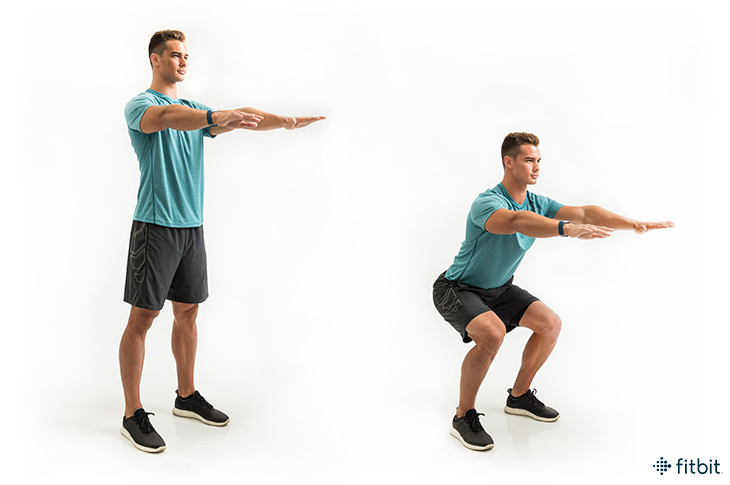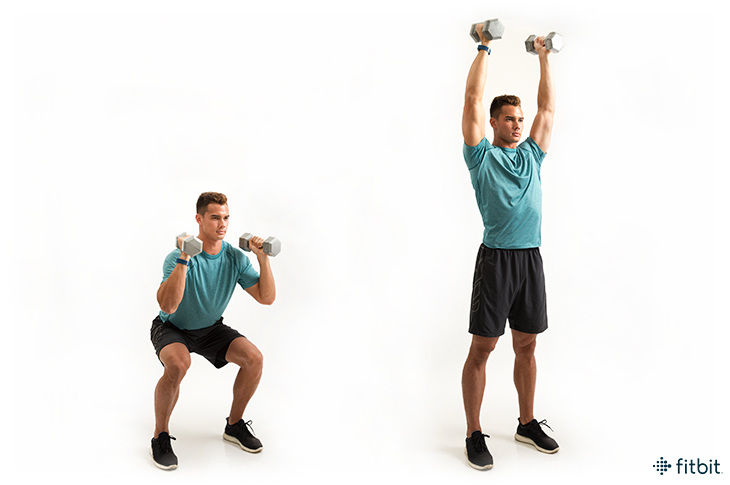
Just like building a house, when it comes to shaping your body, you’ll want to forge a strong foundation first. And there’s no better brick than a classic move, to help fortify your muscles and your technique for any other exercises to come.
Once you master the classics, you’ll be able to mix and match them along with their variations, for better workouts and a stronger you. Here’s how to do a perfect squat.
The Move: Squat

WHY IT’S GREAT
This go-anywhere move strengthens your glutes, thighs, and quads—your largest muscle groups which form the lower part of your core, and when worked, burn major calories. You can perform squats as part of a dynamic warm-up, or include them as part of your strength-training routine. Squats are also one of the most versatile basics in fitness: There are countless variations, and they’re easy to build upon, whether you add dumbbells, a kettlebell, or upper-body exercises to form compound movements. You can also shift your positioning, to work your muscles in different ways.
However you do them, mastering the basic squat will help set you up for any workout to come (not to mention give your booty a boost).
HOW TO DO IT
Stand with feet just wider than hip distance. You can turn your toes slightly out—as long as it feels like a natural, comfortable position. For bodyweight squats, interlace your fingers behind your head, or extend arms out in front of your chest. Keeping your chest up and eyes ahead, and the bulk of your weight over the centers of your feet and in your heels, lower your body toward the floor, bending your knees until they reach 90 degrees. Press back up through your heels, to start. That’s one rep.
If you’re doing bodyweight squats as part of a dynamic warm-up, aim to complete 20 to 25 reps to warm your muscles. If you’re performing squats with weights, shoot for three sets of 10 to 12 reps, with moderate weight.
Mix It Up: 3 Squat Variations
Bodyweight Squat with Jump

Adding a jump at the end of your squat works fast-twitch muscle fibers, which when exercised, can help boost your strength and athleticism.
Perform a bodyweight squat (as described above) with your fingers interlaced behind your head. As you push up through your feet to rise to the starting position, spring up from the balls of your feet into a jump. Land softly on the balls of your feet, lower your feet so they’re flat on the floor, and sink down into your next squat.
Repeat for 3 to 10 reps, depending on your fitness level.
Boost it: As you advance, aim to jump higher, making sure to bend your knees and absorb your landing, lowering into the next squat.
Dumbbell Squat with Shoulder Press

Adding an upper-body exercise like a press or curl creates a compound movement, and can work your entire body with one move. Compound exercises are an efficient way to slip total-body toning into a busy schedule. You’ll also burn more calories in less time.
Grab a light or moderate weight pair of dumbbells, holding one in each hand. Raise the dumbbells so you can hold them comfortably by your shoulders, with your palms facing your ears. Lower into a squat, and as you rise up to the start position, press the dumbbells up over head in a smooth, controlled motion. That’s one rep. Lower the dumbbells back to start, and then lower your body into your next squat.
Perform 2 to 3 sets of 8 to 15 reps depending on your fitness level.
Switch it up: Turn the dumbbells so that your palms face forward to challenge a different part of your shoulders, or perform biceps curls at the top of the squat, instead of a shoulder press.
Sumo Squat

Whether you’re advanced or a newbie, one of the easiest ways to change up a squat is to vary your stance—and target different parts of your glutes, hips, and thighs. With a Sumo Squat, you’ll give your inner thighs, and your Piriformis—the muscle at the top, outer parts of your glutes—an extra challenge. Working your muscles in different ways like this can help support your joints, and stave off injuries.
Stand with feet wider than hip distance, toes turned slightly out to about 45 degrees. Lower your body toward the floor, keeping eyes and chest up, and driving your tailbone straight down. You can perform these with your bodyweight, and hold your hands in front of your chest, or clasped behind your head.
Perform 2 to 3 sets of 8 to 15 reps, depending on your fitness level
Make it harder: You can also perform these as a Goblet Squat, and hold a larger dumbbell or kettlebell with both hands, with your arms extended down toward the floor. Keep the weight still as you lower and rise to form your reps.
This information is for educational purposes only and is not intended as a substitute for medical diagnosis or treatment. You should not use this information to diagnose or treat a health problem or condition. Always check with your doctor before changing your diet, altering your sleep habits, taking supplements, or starting a new fitness routine.

I enjoyed your very interesting article, will try these moves. Cheers Paul
Hello, I came from Japan
It will be practiced immediately with an easy-to-understand explanation. Thank you very much.